Notes sur la ville qui n’existait pas 2
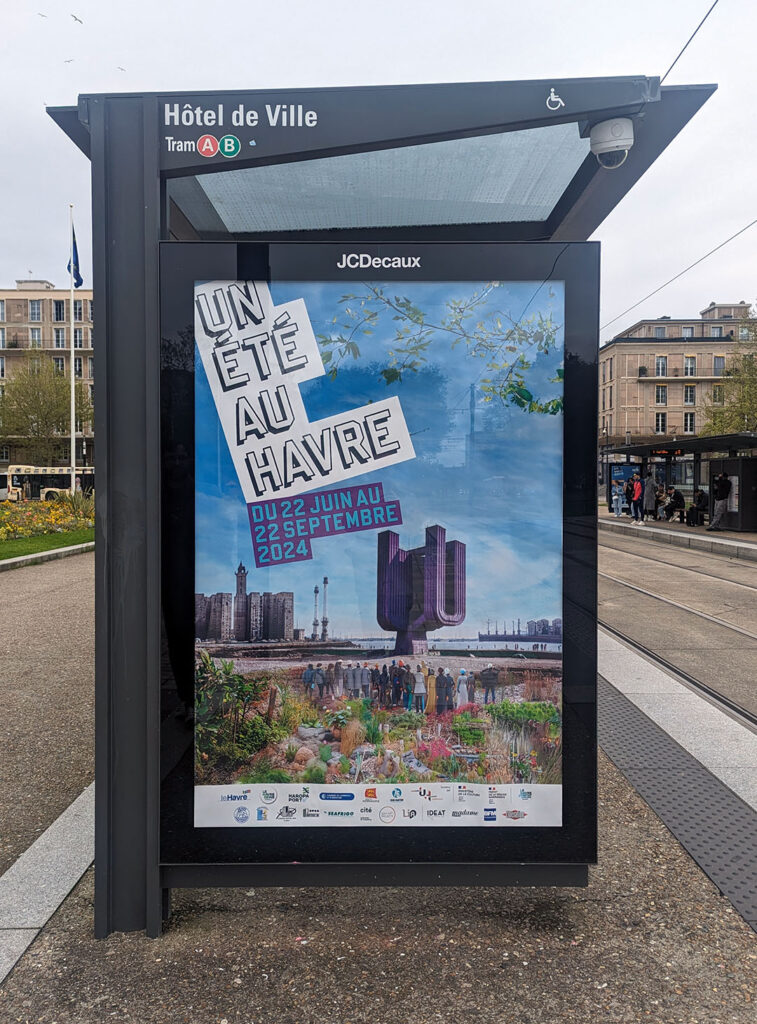
Habituellement, on intervient ponctuellement dans un espacxe urbain hors de la galerie qui est un lieu protégé. On tente alors de se situer immédiatement dans le contexte publique. On intègre peut-être des fragments d’archives, des témoignages d’habitants, des éléments de la mémoire individuelle et collective. Cela reste une note isolée, car une fois terminée, on s’en va. Mais pouvoir, comme c’est le cas ici, accumuler la propre mémoire du projet sur une durée de trois ans et revenir sur les lieux, c’est entrer dans un tout autre horizon. On enchâsse chaque année, on les superpose, en les réinterprétant d’année en année jusqu’à ce que les mémoires individuelles des visiteurs deviennent indistinctes de cette mémoire de l’œuvre. Ce n’est plus une note isolée, c’est une mélodie où les notes passées, présentes et futures s’influencent réciproquement pour produire un autre temps.
Je me remets du travail au Havre pour une seconde année consécutive et, chemin faisant, je me rends compte de la chance que m’a offerte Gaël Charbau en me proposant de travailler pendant plusieurs années sur Un été au Havre. Car il est rare de pouvoir ainsi déployer son travail artistique dans le temps.
Le triptyque « La ville qui n’existait pas » est une tentative pour contrefactualiser une ville, le Havre, par l’imagination artificielle. Il ne s’agit pas du Havre tel qu’il existe mais tel qui aurait pu ou pourra exister. C’est une ville fictionnelle car à mes yeux toute ville promet un espace qui l’excède, une u-topie, et produit une seconde nature, une nature artificielle. Nous vivons dans une ville comme dans notre maison originele. La ville est infinie parce qu’elle n’est jamais finie (elle se construit et se détruit, c’est particulièrement vrai dans l’histoire du Havre) et on a du mal à distinguer en elle ce qui relève de la fiction et de la réalité.
Ce second volet, « La logistique des mémoires », consistera à matérialiser la première année (« L’espace latent ») qui couvrait le passé, soit la période 1895-1971, et qui imaginait, par l’intermédiaire d’une vingtaine de tirages photographiques grand format installée sur des bâtiments Alcéane et 25 000 cartes postales uniques, une révolution industrielle alternative où la technique, le débris et la germination végétale se seraient entrelacés. « La logistique des mémoires » couvre la période de 1971 à 2024, le présent déterminé par la fin des accords de Bretton Woods, et consistera en des sculptures reprenant les formes sculpturales qui émergent dans les images de la première année en les associant aux témoignages des habitants qui resteront anonymes, ouvrant la possibilité de la constitution collective. Ces mémoires seront utilisées pendant la dernière année pour construire une imagination artificielle propre au Havre.
Des dispositifs satellites avec une exposition au MUMA qui se nommera « La voix des possibles » et un film diffusé dans la salle de théâtre de la Mairie, dont la bande-son sera composée par Olivier Alary, permettront de tisser des liens supplémentaires avec l’année précédente, en reprenant et en réinterprétant sa fiction.
Indépendamment de ma volonté, je vois émerger une strate supplémentaire dans la ville autour de mes projets signalés par le violet, une strate qui insère du possible dans le factuel, qui reprend le fil historique tissé entre le passé (1895-1971), le présent (1971-2024) et le futur (2024-2895). Il s’agit de réinterroger le présent depuis un passé alternatif envisagé du point de vue d’un futur contrefactuel.
J’espère qu’au bout de 3 ans par la stratification, la superposition et la mémorisation des différentes étapes, un singulierrécit émergera qui ne sera résumable à aucune de ses parties, mais qui se retrouvera dans les liens de distance entre les fragments de ce tryptique. Entre cette fragmentation de la fiction, dont le destin fut ouvert par les avant-gardes expérimentales de la modernité, et l’induction statistique des imaginations artificielles, il existe un lien. Bien sûr, je le sais infiniment minoritaire, tant nous sommes pris dans les mailles des classes vectorielles et de la domination carbofasciste, mais à cette époque, la nôtre, comme aux autres, il s’agit du moins de garder du possible, possible dont la fragilité même garde toute la puissance.
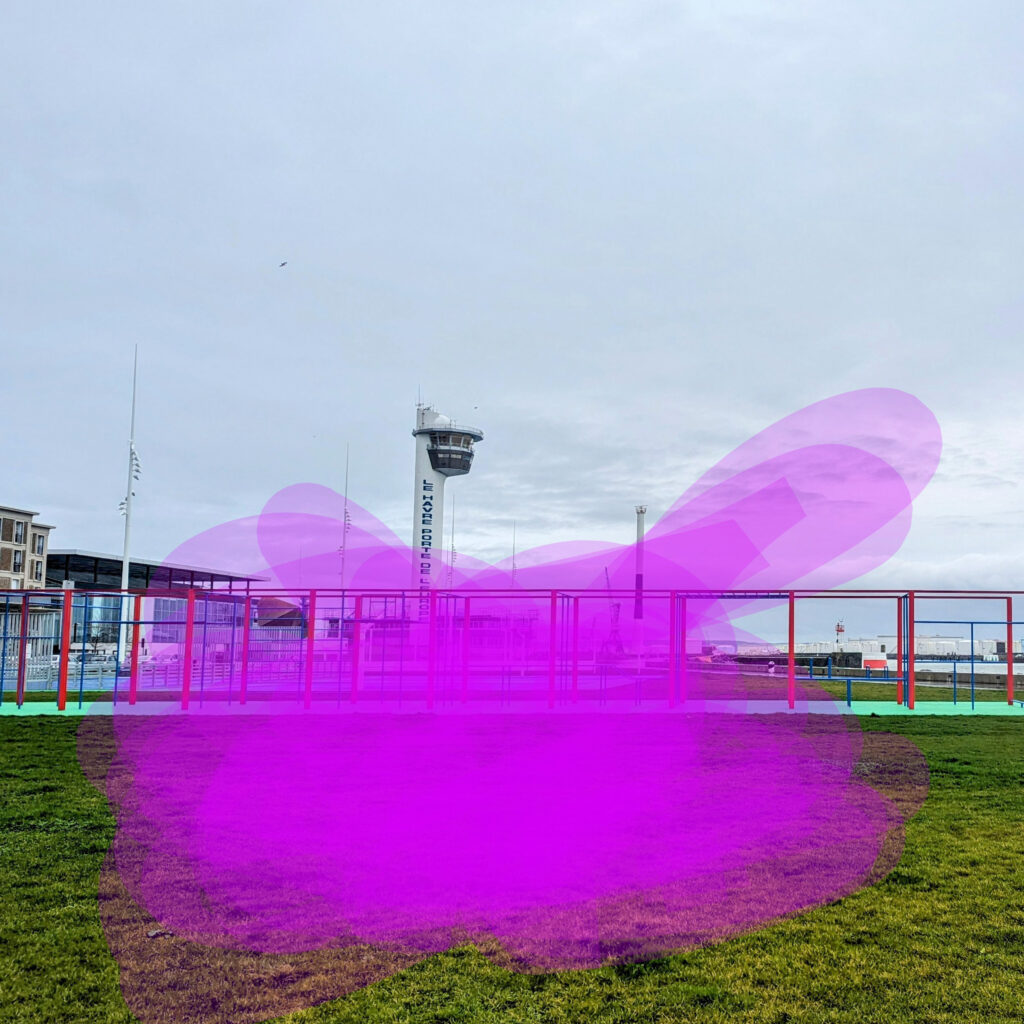
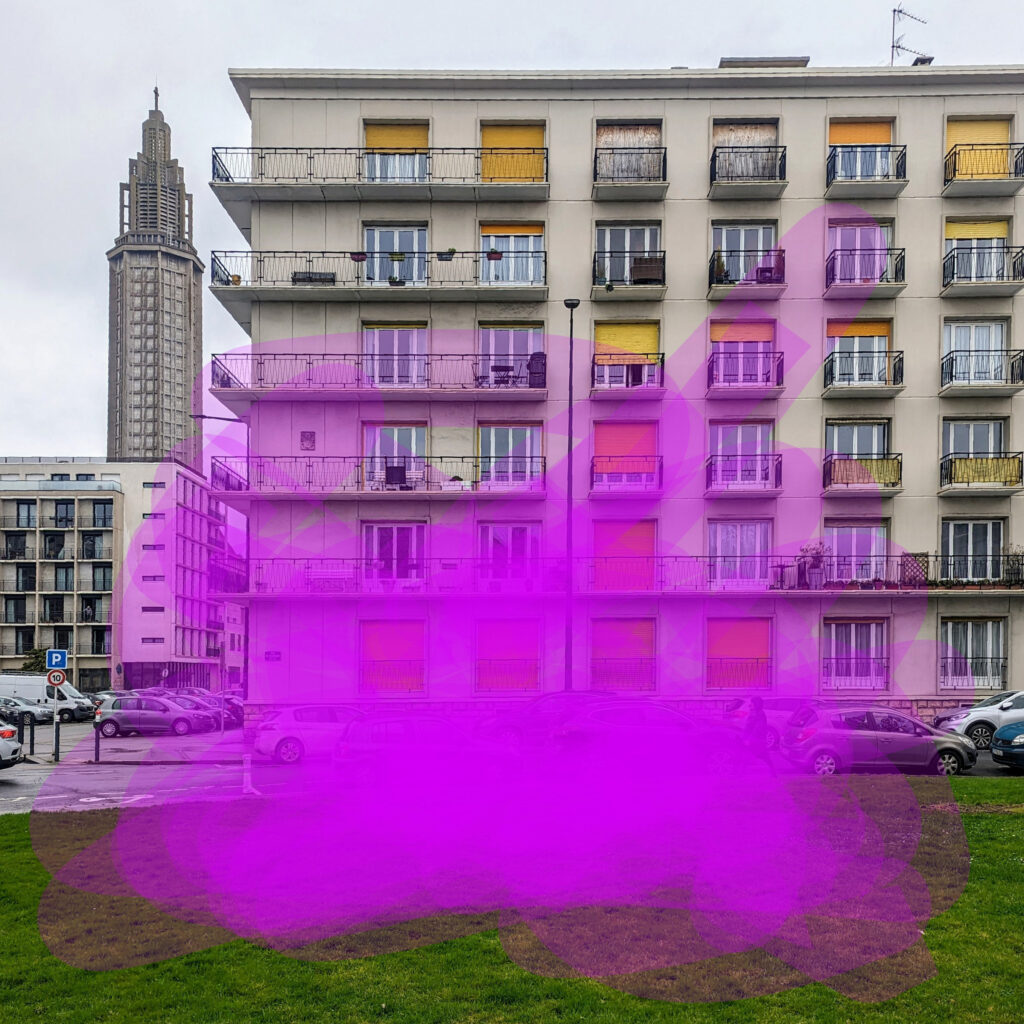
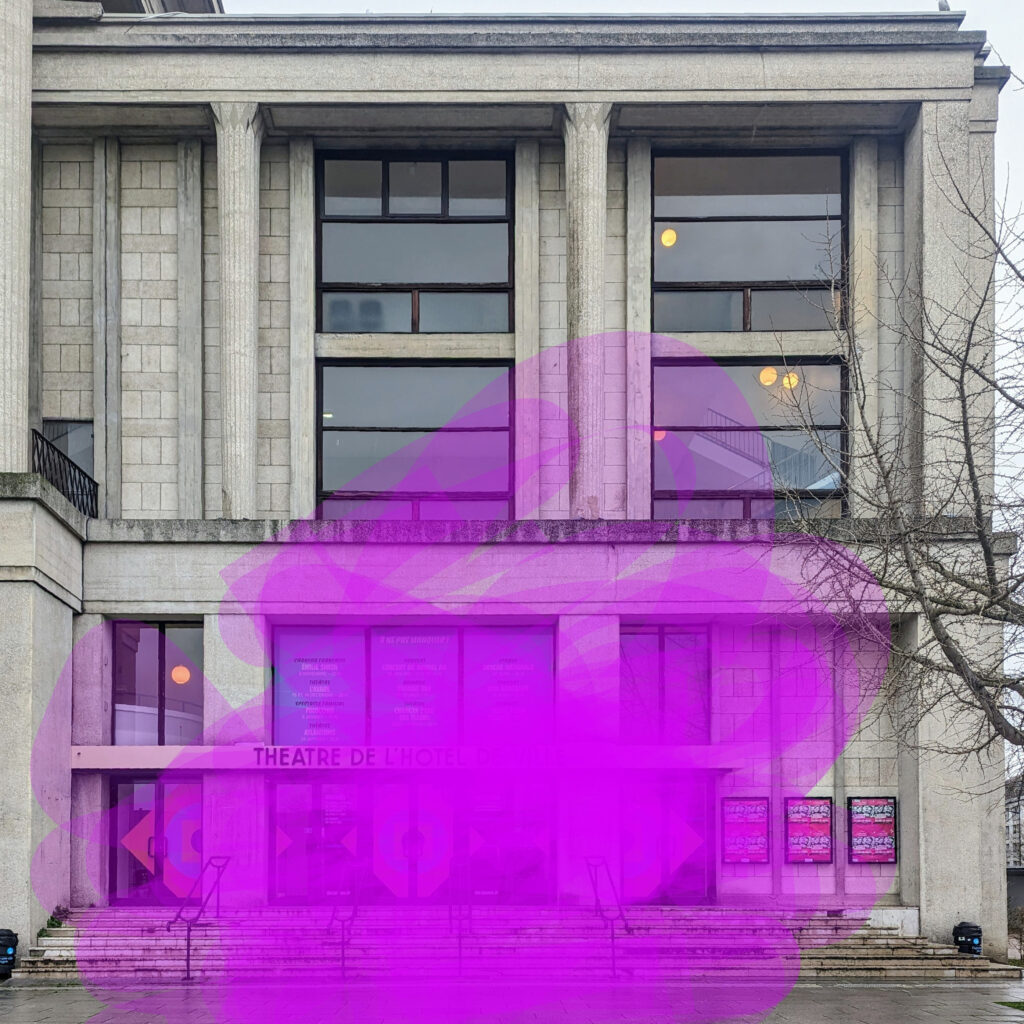
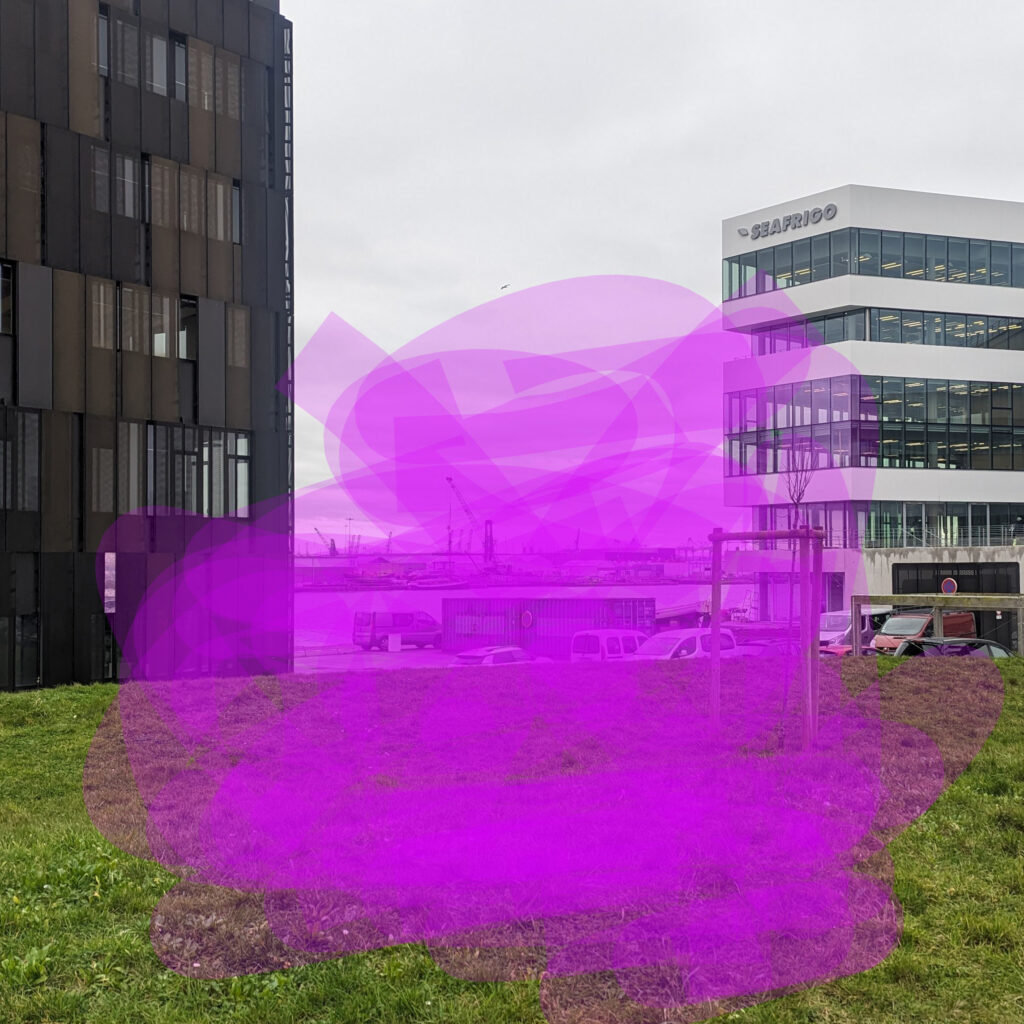
I’m back at work in Le Havre for the second year running, and along the way, I’m realizing just how lucky I was when Gaël Charbau offered me the chance to work on Un été au Havre for several years. Because it’s rare to be able to deploy one’s artistic work over time in this way.
Usually, we intervene on an ad hoc basis and try to situate ourselves immediately in the public context. Perhaps we integrate fragments of archives, testimonials from local residents, elements of individual and collective memory. It remains an isolated note, because once it’s finished, we leave. But to be able, as in this case, to accumulate the project’s own memory over a three-year period and return to the site is to enter a whole new horizon. Each year is enshrined and superimposed, reinterpreted from year to year, until the individual memories of visitors become indistinct from this memory of the work. It’s no longer an isolated note, it’s a melody in which past, present and future notes influence each other to produce another time.
The triptych “La ville qui n’existait pas” (The city that didn’t exist) is an attempt to counterfactualize a city, Le Havre, through artificial imagination, because every city promises a space that exceeds it, an u-topia, and produces a second nature, an artificial nature. We live in a city as if in our original space. The city is infinite because it’s never finished, and it’s hard to distinguish between fiction and reality.
This second part, “The logistics of memories”, will consist of materializing the first year (“Latent space”), which covered the past, i.e. the period 1895-1971, and which imagined, through the intermediary of some twenty large-format photographic prints installed on Alcéane buildings and 25,000 unique postcards, an alternative industrial revolution where technology, debris and plant germination would have intertwined. “La logistique des mémoires” covers the period from 1971 to 2024, the present determined by the end of the Bretton Woods agreements, and will consist of volumes taking up the sculptural forms that emerge in the images of the first year, associating them with the testimonies of inhabitants who will remain anonymous, opening up the possibility of collective constitution. During the final year, these memories will be used to build an artificial imagination specific to Le Havre.
Satellite installations, including an exhibition at the MUMA called “Angélique” and a film shown in the Town Hall theater, with a soundtrack composed by Olivier Alary, will weave further links with the previous year, taking up and reinterpreting its thread to deepen it afterwards.
Irrespective of my planned intentions, I see an additional stratum emerging in the city around my projects marked in purple, a stratum that inserts the possible into the factual, that picks up the historical thread woven between past, present and future to relaunch the city, so that what has not taken place can reopen the possibility of what is placeless, i.e. the city itself.
Undoubtedly, after 3 years, through the accumulation, superimposition and memorization of the various stages, a certain narrative will emerge that cannot be summed up in any of its parts, but which will only be found in the links of distance between the fragments of this triptych. There is a link between this fragmentation of fiction, whose destiny was opened up by the experimental avant-gardes of modernity, and the statistical induction of artificial imaginations. Of course, I know that this is an infinitely small minority, so caught up are we in the meshes of vectorial classes and carbofascist domination, but in this era, ours, as in others, it’s at least a question of preserving the possible, a possible whose very fragility retains all its power.
